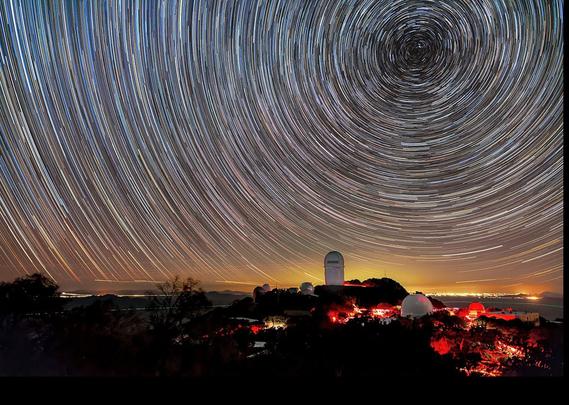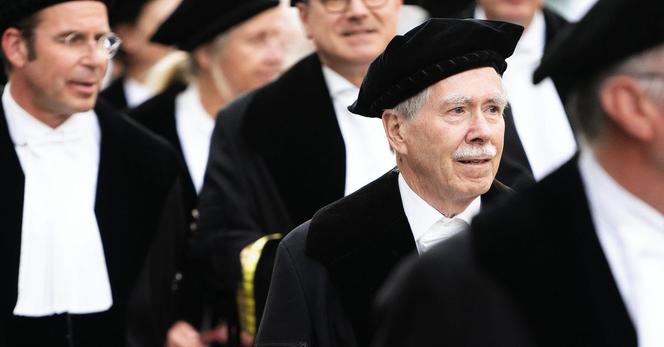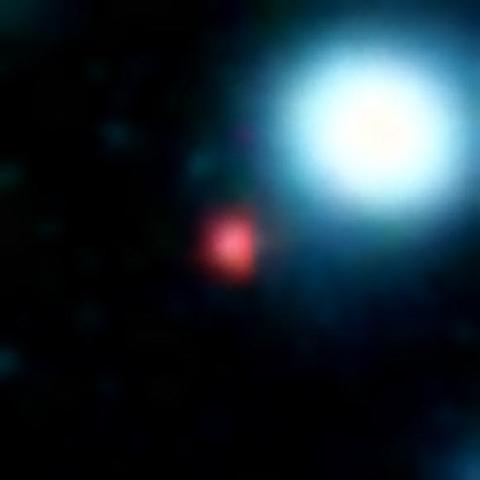𝗪𝗲𝗹𝗸𝗲 𝗰𝗵𝗶𝗽 𝗸𝗿𝗶𝗷𝗴𝘁 𝗱𝗲 𝗶𝗣𝗵𝗼𝗻𝗲 17-𝘀𝗲𝗿𝗶𝗲? ‘𝗦𝘁𝗮𝗻𝗱𝗮𝗮𝗿𝗱𝗺𝗼𝗱𝗲𝗹 𝘇𝗲𝘁 𝗲𝗲𝗻 𝘀𝘁𝗮𝗽 𝘁𝗲𝗿𝘂𝗴’
Welke nieuwe A-chip krijgt de iPhone 17? Apple kiest mogelijk weer voor twee varianten: de snelste chip voor de Pro-modellen en een minder snelle chip voor het standaardmodel. Maar klopt dat wel?
https://www.iculture.nl/nieuws/iphone-17-chip/
#iPhone17 #chip #standaardmodel

Welke chip krijgt de iPhone 17-serie? 'Standaardmodel zet een stap terug'
Welke chip krijgt de iPhone 17-serie? Er gaan geruchten over de nieuwe A19- en A1 Pro-chip, maar een model kan ook nog een A18-chip krijgen.
"Verbazingwekkende ontdekking over donkere energie start zoektocht naar nieuw model van het heelal"
--> "‘Schokkende’ resultaten van een groot astronomisch onderzoek hebben twijfels opgeroepen over het standaardmodel van de kosmologie."
--> "Recente, baanbrekende ontdekkingen suggereren dat donkere energie zwakker wordt naarmate het heelal uitdijt."
(Via #newscientist_NL ) #nieuwsbrief #standaardmodel #donkerenergie
https://www.newscientist.nl/nieuws/verbazingwekkende-ontdekking-over-donkere-energie-start-zoektocht-naar-nieuw-model-van-het-heelal/

Verbazingwekkende ontdekking over donkere energie start zoektocht naar nieuw model van het heelal
‘Schokkende' resultaten van een groot astronomisch onderzoek hebben twijfels opgeroepen over het standaardmodel van de kosmologie. Dit dwingt wetenschappers om nieuwe manieren te bedenken om donkere energie en zwaartekracht te begrijpen.

Nederlandse Nobelprijswinnaar Gerard ’t Hooft krijgt grote wetenschapsprijs
Natuurkunde: De zogeheten Breakthrough-prijzen worden sinds 2013 uitgereikt. „Heel vererend”, zegt natuurkundige ’t Hooft.
Webb bevestigt de afstandmetingen van de Hubble
Nieuwe waarnemingen van de Webb Space Telescope bevestigen eerdere metingen door de Hubble Space Telescope van afstanden tussen nabijgelegen sterren en sterrenstelsels, wat een cruciale kruiscontrole biedt om de mismatch in metingen van de m
https://www.kuuke.nl/webb-bevestigt-de-afstandmetingen-van-de-hubble/
#Cephede #HubbleConstante #HubbleSpaceTelescope #HubbleSpanning #KlassiekeCephede #oerknal #StandaardModel #WebbSpaceTelescope
Webb bevestigt de afstandmetingen van de Hubble – Kuuke's Sterrenbeelden
Nieuwe waarnemingen van de Webb Space Telescope bevestigen eerdere metingen door de Hubble Space Telescope van afstanden tussen nabijgelegen sterren en sterrenstelsels, wat een cruciale kruiscontrole biedt om de mismatch in metingen van de mysterieuze expansie van het heelal aan te pakken. De discrepantie, bekend als de Hubble-spanning, blijft zelfs door de beste kosmologische modellen…
Ik vind dit superinteressant maar dit is ook gelijk best lastig om te snappen. Weet iemand hier meer van om dit uit te leggen? Bijvoorbeeld hoe hebben ze de berekening van de voorspelling van het verval van 1 op de 10miljard gedaan? En er zit een verschil tussen voorspelling en de metingen, wat betekent dat?
#CERN #NA62 #Standaardmodel #Deeltjesfysica #HadiktochmijnnatuurkundestudiemaarafgemaaktVandaag heeft het #NA62-experiment bij #CERN een ultra-zeldzaam verval waargenomen van een positief geladen kaon (K⁺) naar een pion (π⁺), een neutrino en een antineutrino (K⁺ → π⁺ ν ν̅). Dit proces gebeurt slechts 1 keer in 10 miljard gevallen, volgens het #Standaardmodel van de deeltjesfysica.
Dit zeldzame verval kan helpen nieuwe fysica te ontdekken die voorbij het Standaardmodel gaat. Spannend nieuws voor de wetenschap! 🔬✨
👀 #Deeltjesfysica #CERNnews #NieuweFysica https://home.cern/news/press-release/physics/na62-experiment-cern-observes-ultra-rare-particle-decay
NA62 experiment at CERN observes ultra-rare particle decay
Geneva, 25 September 2024. At a seminar held at CERN this week, the NA62 collaboration reported the unequivocal confirmation of the ultra-rare decay of a positively charged kaon into a positively charged pion and a neutrino–antineutrino pair. Experiments including NA62 have previously measured and seen evidence of this process, but this is the first time it has been measured with a statistical significance of five standard deviations, crossing the threshold traditionally required to claim a discovery in particle physics. Denoted by K+→π+νν, this decay is among the rarest particle processes ever observed: in the Standard Model of particle physics, less than one in 10 billion positively charged kaons are predicted to decay in this way. “This observation is the culmination of a project that started more than a decade ago,” says NA62 spokesperson Giuseppe Ruggiero. “Looking for effects in nature that have probabilities of happening of the order of 10-11 is both fascinating and challenging. After rigorous and painstaking work, we have finally seen the process NA62 was designed and built to observe.” But why are physicists looking for a process that occurs so rarely? The reason is that theoretical models suggest that the K+→π+νν decay is extremely sensitive to deviations from the Standard Model prediction, making it one of the most interesting processes to search for evidence of new physics beyond the Standard Model. Analysing data collected by the NA62 detector between 2016 and 2022, the NA62 researchers measured the fraction of K+ that decay in this way to be 13.0 +3.3 -2.9 × 10-11. With a relative precision of 25%, this is the most precise measurement of the K+→π+νν decay to date. The result is about 50% larger than the Standard Model prediction but is compatible with it given the overall uncertainty. With data taking ongoing, NA62 is set to be able to test the possibility of new physics in this decay within the next few years. “Searching for hints of new physics in this decay requires more data, but this result is a leap forward and further strengthens the strong interest in this line of research,” says NA62 physics coordinator Karim Massri. In the NA62 experiment, kaons are produced by slamming a high-intensity proton beam from CERN’s Super Proton Synchrotron into a stationary target. As a result, almost a billion secondary particles are produced each second, and these fly into the NA62 detector. Of these particles, about 6% are positively charged kaons. NA62 precisely detects the decay products of kaons, identifying and measuring all the particles produced except the neutrinos, whose presence is deduced from their missing energy. Crucial to this result was the data from 2021 and 2022, which was taken following the completion of detector upgrades that enabled NA62 to operate at 30% higher beam intensities. Combined with improvements to data-analysis techniques, these hardware upgrades enabled the collection of signal candidates 50% faster than before, while adding new tools to suppress the background processes that could mimic the K+→π+νν decay. “This measurement relies on identifying the one-in-10-billion K+ decay that is our signal and making sure it is not one of the other 9 999 999 999 decays that can mimic the signal,” says lead data analyst Joel Swallow. “The whole NA62 collaboration has made this almost impossible result possible.”
Vroege sterrenstelsels waren minder massief dan eerder werd gedacht
In een artikel dat deze week in de Astronomical Journal is gepubliceerd, analyseren astronomen de evolutie van enorme sterrenstelsels met roodverschuivingen van 4 – 8, geselecteerd uit de JWST Cosmic Evolution Early Release Survey (CEERS).
https://www.kuuke.nl/vroege-sterrenstelsels-waren-minder-massief-dan-eerder-werd-gedacht/
#CEERS #esa #JWST #kosmologie #nasa #StandaardModel #sterrenstelsel #VroegeHeelal #webb

Vroege sterrenstelsels waren minder massief dan eerder werd gedacht
In een artikel dat deze week in de Astronomical Journal is gepubliceerd, analyseren astronomen de evolutie van enorme sterrenstelsels met roodverschuivingen van 4 – 8, geselecteerd uit de JWST Cosm…



